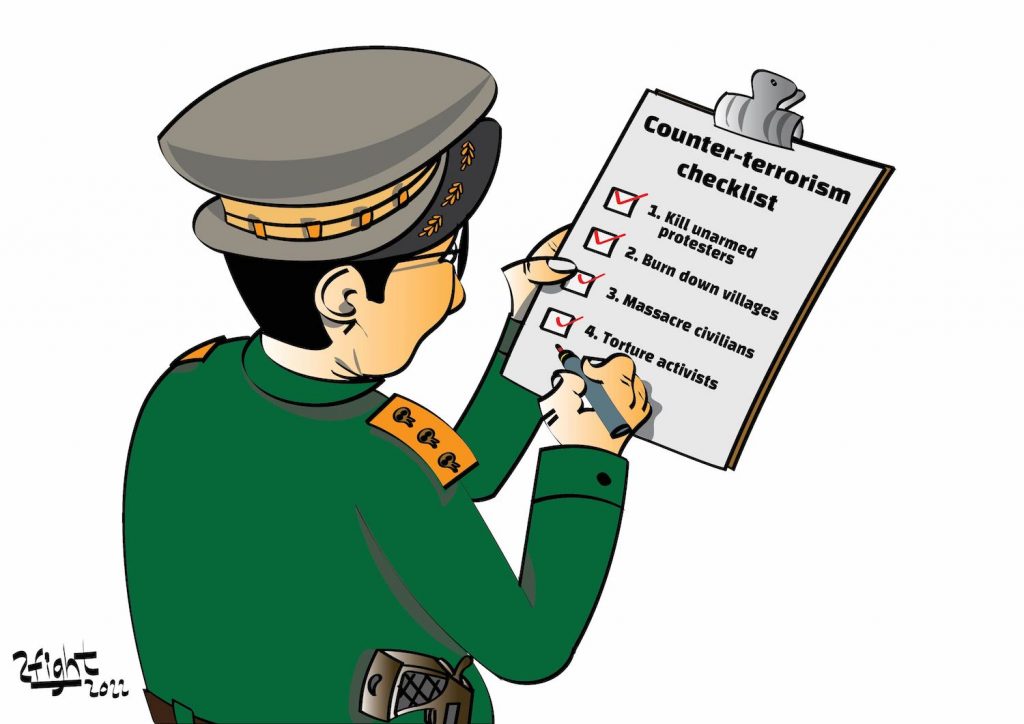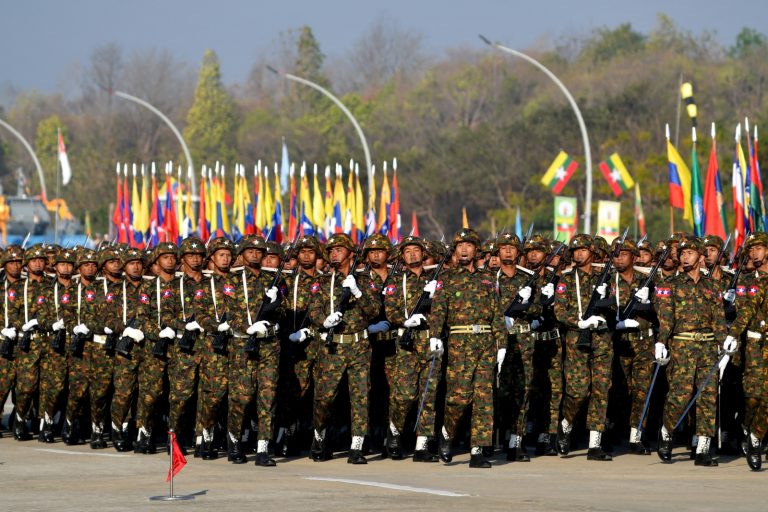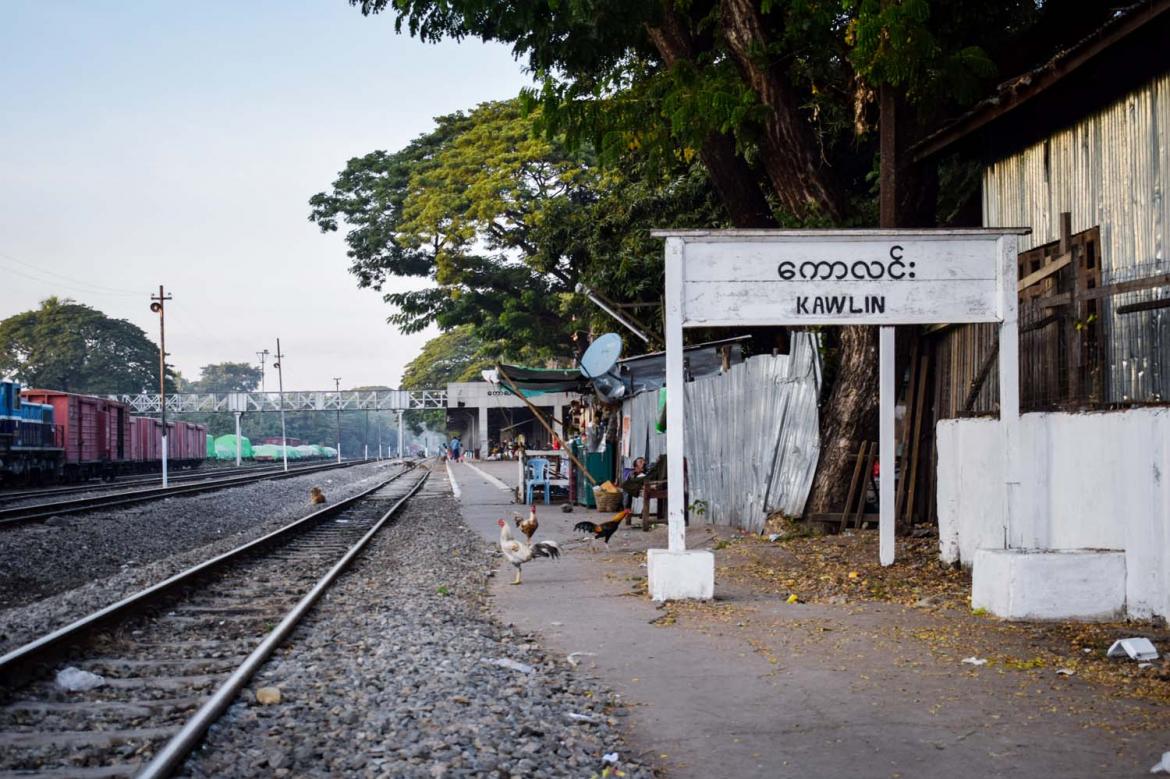An international terrorism monitor missed the mark when it labeled a resistance attack on soldiers as terrorism, which may only serve to embolden the real terrorists in Myanmar: the military.
A defining feature of military rule in Myanmar has been the use of mass violence against civilians to cause terror for political gain.
From massacres of unarmed protesters, to late-night raids and often fatal torture sessions, to burning down entire villages where resistance forces operate and slaughtering their civilian inhabitants: every successful tactic the military has used to quash dissent has been rooted in creating fear.
It’s textbook terrorism. As the country crumbles around them, instilling terror in the hearts of the general population seems to be the only thing the junta is any good at. So it came as a surprise to many when the Institute for Economics and Peace indicated a rise in terrorism in Myanmar not due to heinous military violence, but due to resistance attacks.
Perplexingly, IEP’s 2022 Global Terrorism Index report said the “most devastating” attack of 2021 in Myanmar was when resistance forces killed 40 soldiers in Sagaing Region’s Katha Township on September 20. IEP says it uses TerrorismTracker to collect data, and it supposedly does not include “irregular or conventional” warfare. It’s hard to understand, therefore, how killing 40 enemy troops during a civil war could be classified as terrorism.
The report does not include any of the many military massacres of unarmed civilians, such as the slaughter of over 60 protesters in Hlaing Tharyar in March 2021, or the killing of more than 80 in Bago the following month. There’s no consistent definition of terrorism that could include killing soldiers in battle but not encompass massacring civilians with the intention of making the rest of the population too afraid to resist. It seems to hinge entirely on the idea that violence is the sole purview of the state.
Given the junta seized power illegally, has no representation at the United Nations, and hasn’t been officially recognised as the government of Myanmar by even one country, the Tatmadaw is closer to a rogue militant group than a professional armed force, let alone a state or government.
While TerrorismTracker also excludes deaths caused by “civil unrest”, this is an overly broad term that could apply to almost anything. It also appears IEP uses it inconsistently. In the 2017, 2019 and 2020 Global Terrorism Index reports, IEP included attacks on protesters in Afghanistan and Iraq in its list of terrorist attacks. Why would these incidents qualify, while the military’s crackdowns do not?
One explanation might be preconceived notions about what terrorism looks like. At its core, the Myanmar military is a racial and religious extremist group that often ludicrously justifies its use of violence as necessary to protect Buddhism. Swap that out for Islam and maybe IEP would have an easier time seeing it as a terrorist organisation.
There are some attacks that have been attributed to resistance groups that could qualify as terrorism. Bombing electricity offices with the intention of making civilians too afraid to pay their electricity bills, for example. These incidents could and should be included, although it seems likely that a fair accounting would show the military has committed more terrorist attacks, with higher civilian casualties, than the resistance.
If IEP wants to measure attacks on security forces or general non-state violence, then by all means include resistance attacks on soldiers and police. But don’t call it terrorism without a more consistent definition of what that actually means.
This is where it gets tricky. There is no universal, international standard for terrorism, partly because the term is so politically charged. Most definitions include acts of violence designed to intimidate a population or to influence a government or international organisation.
The terrorism label also has implications for perceptions of legitimacy. The junta has not only declared anti-coup armed groups to be terrorist organisations, but also the National Unity Government, in an attempt to discredit them. The fact is though, that the NUG was appointed by elected lawmakers, while the military junta illegally seized power after losing an election. By calling resistance attacks terrorism, but not using the term to describe the military, IEP has taken a side in the legitimacy dispute while presenting itself as neutral.
This matters because the Global Terrorism Index report could actually cause more acts of terrorism in Myanmar, by giving more fodder to the military’s propaganda machine. The junta has long justified its use of disproportionate violence by claiming that all its opponents are terrorists – even unarmed peaceful protesters.
In 2021, the BBC investigated a series of military massacres committed in July that left 40 civilians dead in Kani Township, also in Sagaing Region. Junta spokesperson Zaw Min Tun later justified the shocking tactics by describing resistance fighters as terrorists, and insisting the military was “using appropriate force in order to achieve a reasonable level of security”.
The IEP report did not mention these massacres – but by labelling resistance attacks as terrorism it helped bolster the military’s excuse for committing them. The risk is that if the military thinks this delusional narrative is gaining traction internationally, it will only feel emboldened to continue using outrageous violence. The result will be more deaths, more destruction and more terror in Myanmar.







